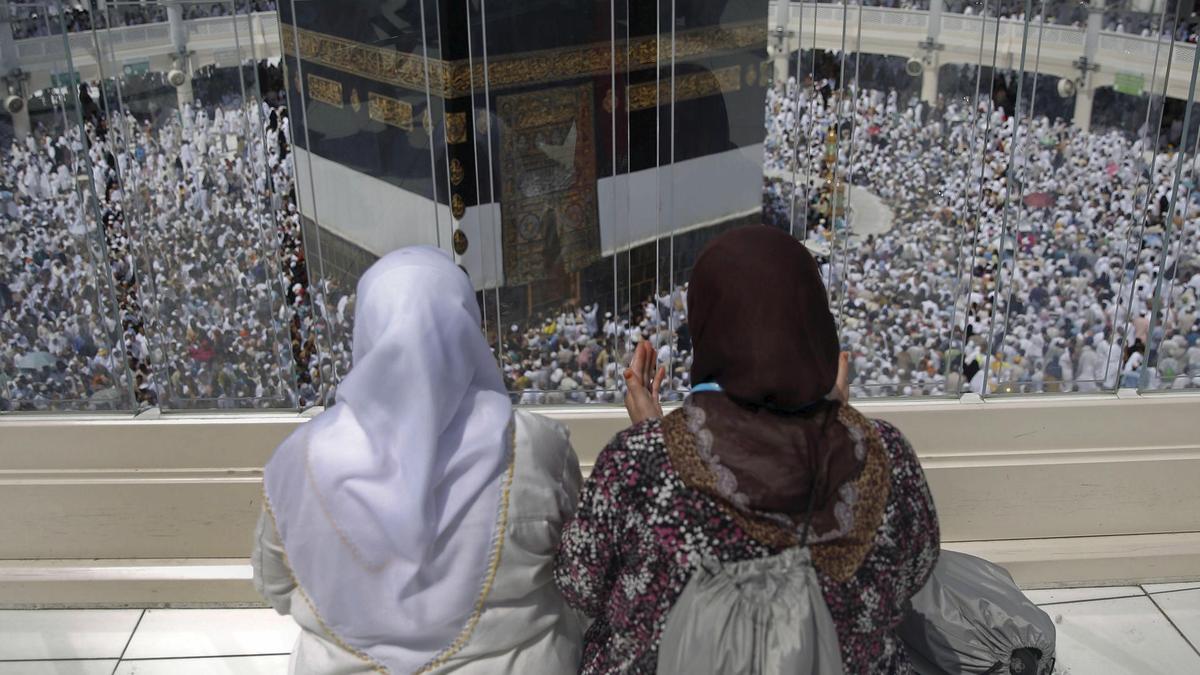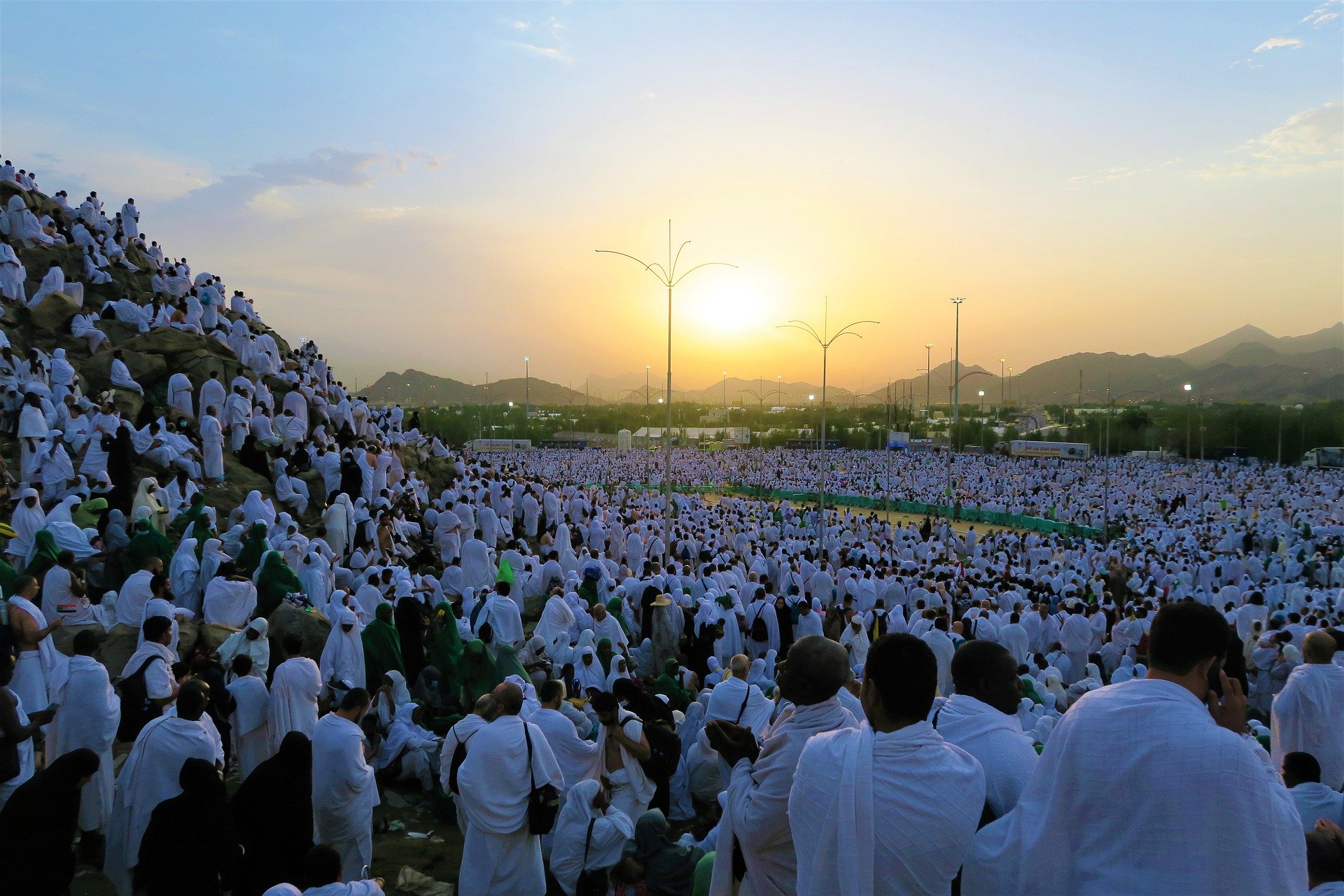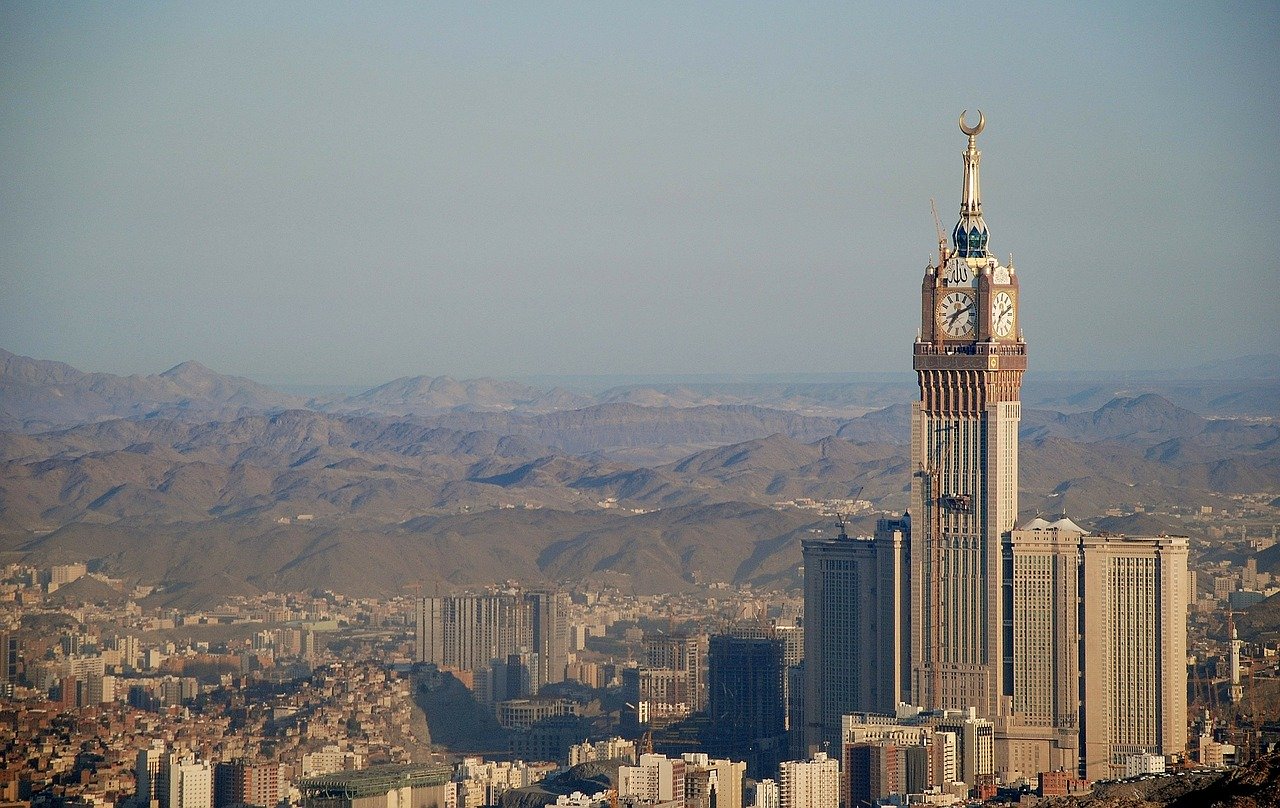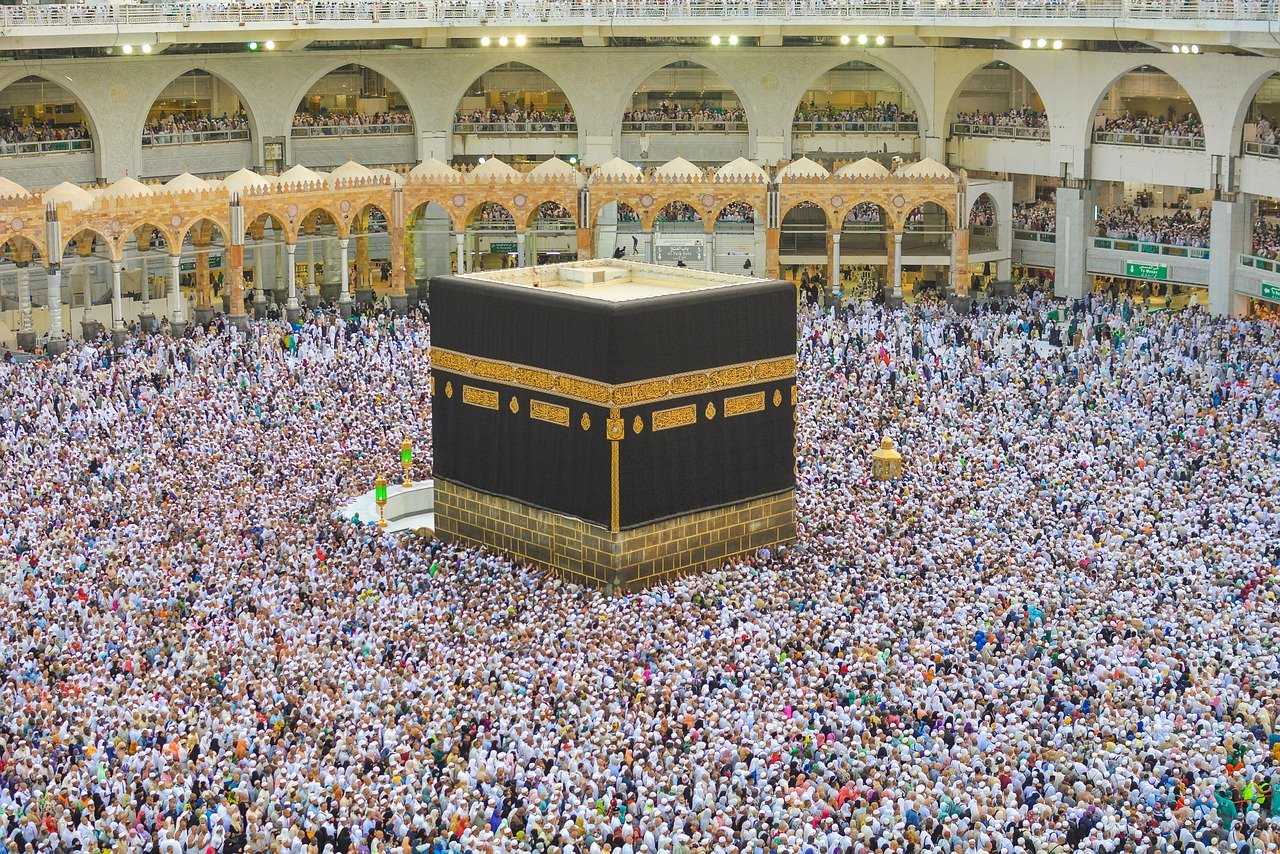This week has been a sacred one for Muslims. The first 10 days of the month of Zul-Hijjah in the Islamic Calendar are considered to be the 10 most important days of the year. The tenth day of this month is celebrated as a holiday called Eid ul Adha. Zul-Hijjah is also the time when millions of Muslims around the world choose to embark on the pilgrimage (Hajj) to the city of Makkah in Saudi Arabia. It is a journey of a lifetime. It is obligatory on every able (physical and financial) Muslim to perform Hajj at least once in their life. I was fortunate enough to embark on my pilgrimage as a teenager. This is my story.
A Journey for Hajj
I was a young teenage girl when my father told us that our family would be going to Saudi Arabia to perform our Hajj. We had heard stories of people returning from their Hajj inspired and connected deeply to their spirituality and faith. I wondered what it would be like to see the Grand Mosque (Masjid al-Haram) in the city of Makkah with my very own eyes—the nights illuminated by the radiance of the towering minarets, the glow of a bustling city of shops, the sound of prayers echoing throughout the city.
We took off from home in the early summer months. Our plane made a stopover in Jordan before we continued to Saudi Arabia. I still remember the moment being much bigger than I could’ve envisioned it. Before we boarded our Saudi-bound plane, we made the intention and supplications that would commence our journey into the country as pilgrims. My father and brother put on their attire: two white cloths (ihram), one tied around their waists and the other draped on the upper part of their bodies. My mother, sister, and I did not need to make any major changes, but we changed into white hijabs and clean clothes before we embarked on our flight.
As we filed onto the plane, I realized that everyone on the flight was dressed just like we were—men in uniform white clothing and women in theirs, referring to each other as Haji (one who performs Hajj). When we took our seats, the captain of our plane respectfully welcomed us with greetings and prayers. He told us how honored he felt flying a plane full of pilgrims ready to fulfill a commandment of God.
During the two-hour flight, he continuously called out the phrase Muslims recite during their days in Hajj. Roughly translated, it is, “I am at your service, God, I am at your service.” He did not tire in calling it out on the speakers continuously, nor we did in repeating after him. My heart felt a sense of unity and community it had not felt before. All of us were united in our commitment to this journey and to God.
A Journey to Makkah

Once we arrived, we got on a chartered bus to drive to Makkah. It was the first step on a pilgrimage in which we left behind worldly luxuries and accommodations for a simplistic and organic means of survival for the next few days. The heat of the Arabian desert was the first element we had to make peace with. Even in an air-conditioned bus, the heat could be felt thick in the air around us. The overly crowded bus did not help.
After we rode through the desert from Jeddah (the city where we landed) to Makkah, we started seeing the impact of millions of worshipers crowded in one desert city. A sea of people were all walking towards the Grand Mosque for their prayers. Streets were too crowded for any transportation to flow through. Shops were full of people buying prayer mats, food, prayer beads, dates, and more. Our bus stopped on the outskirts and we were instructed to walk to our hotel.
After refreshing, we made our way to Masjid Al-Haram (Grand Mosque). My father held on to my hand tightly. He showed us various markers along the way in case we got lost. We set a meeting place inside and outside the mosque in case we became separated.
And then, there it was . . .
The Kaaba, a cube in the center of the mosque where a sea of worshipers gravitated in a circular motion, endlessly and infinitely. The Kaaba is decorated with a large black cloth with verses of the Quran inscribed upon it in golden thread.
Home. That’s what it felt like seeing the Kaaba . . . home. Like this was where my soul belonged. The movement continuously circling around the “House of the God” mirrored the feelings in my heart of keeping God at the center of my life. The Kaaba is important as it serves as the direction every Muslim prays five times a day towards. All of us, in one direction. There is something deeply profound seeing it with your own eyes—your heart soars and becomes overwhelmed. Tears automatically flow from the powerful emotions in your heart, abundant with faith and gratitude.
A Journey to Mina

We later performed the obligatory actions of Umrah, a micro-pilgrimage that is necessary when you arrive in the holy city of Makkah. We then planned out the the next few days of our pilgrimage. First was Mina, a tent city considered home base for Hajj pilgrims. Once we arrived in Mina, we saw hundreds and hundreds of white tent structures that went far beyond our sights. Inside these tents were thick rugs and fans. Small groups were designated to stay within each tent—women and children in one portion, men in another. We slept at night gathered inside these tents. It felt strange but exciting to take on this passage.
A Journey to Arafat
We spent a day in Mina before we set foot for the blessed plains of Arafat. Arafat is a very important part of Hajj. It is where Haji gather to pray to God and ask for his mercy, forgiveness, and the strength to be guided towards a life of faith. Off in the distance, in the plains, we saw a short mountain, Mount Arafat. This is where Prophet Mohammed gave his last sermon to those who were present at Hajj with him.
Many pilgrims were climbing this rocky mountain. When they reached individual spots on “Mount Mercy,” they raised their hands up and prayed. I remember climbing a portion of “Mount Mercy” (Jabel e Rahma) and feeling deeply connected to God through prayer. We stayed in Arafat from noon until sunset. The day of Arafat is sacred and deeply spiritual. It allows you to ponder the life you’ve lived so far, the life you want for the future, and to turn to God with heavy hearts and thoughts.
The day we gathered in Arafat was an especially hot day. The government of Saudi Arabia provided a continuous supply of cold water to the pilgrims. Tents with large red crescents were sprinkled throughout the grounds to signify medics on standby. An endless flow of people streamed into the grounds. Buses upon buses entered and brought more people. All I could see was people. It was unifying to know we all had come with the same idea and intention. After so many years of life and events, this day is still one of the most sacred ones from my journey of a lifetime.
A Journey to Muzdalifah
After sundown, we proceeded to walk towards Muzdalifah, an area that’s about nine kilometers from Arafat. We slept under the stars in the night sky. Every pilgrim, millions of us, settled on to the ground, pulled out our mats, and slept looking into the Arabian night. This was also where we gathered small pebbles and stones that we needed for the rites the following day.
As dawn began to lighten the sky, my parents woke us up to return to the tent city of Mina. The day after Arafat is a big day, known as Yawm ul-Hajj al-Akbar (the big day of Hajj). It’s the day I thought would be the ”most fun” part of Hajj, going to the first of three pillars (Jamarat) and throwing seven stones towards it. The symbolic act of stoning the devil comes from the historic tradition when God told Abraham to sacrifice his son as proof of faith. “It is believed that at this spot in Mina, the devil appeared and tried to dissuade Abraham from heeding the command. Abraham responded by throwing stones to scare him.”
A Journey of Sacrifice and Eid ul-Adha
 After the act of stoning, pilgrims are required to sacrifice an animal—a continuation of Abraham’s story: when he went to sacrifice his son, God replaced the son with a ram and the animal was sacrificed instead. For those not performing Hajj that year, the day is celebrated as Eid ul Adha (Festival of Sacrifice). They also sacrifice an animal (Qurbani/Udhiya) on this day to commemorate the same story of sacrifice and obedience to God. The meat is distributed in three parts: a third to you and your family, a third to friends, and, the final third to be donated to those in need.
After the act of stoning, pilgrims are required to sacrifice an animal—a continuation of Abraham’s story: when he went to sacrifice his son, God replaced the son with a ram and the animal was sacrificed instead. For those not performing Hajj that year, the day is celebrated as Eid ul Adha (Festival of Sacrifice). They also sacrifice an animal (Qurbani/Udhiya) on this day to commemorate the same story of sacrifice and obedience to God. The meat is distributed in three parts: a third to you and your family, a third to friends, and, the final third to be donated to those in need.
Once the sacrifice took place, we trimmed our hair and were able to change out of our ihram (special clothing) and into normal clothing. We then went on to Makkah to visit the Grand Mosque and performed our necessary prayers and rites.
We returned to Mina for an additional two days of stoning before our five-day Hajj came to an end.
The pilgrimage of Hajj is a deeply profound experience and a spiritual journey. Muslims who return home after their Hajj feel a revival of faith and connection to God (Allah). We honor the returning Haji and celebrate with parties and presents. For me, it has been many, many years since my Hajj. But each detail and the feeling of being in Hajj is still alive in my heart like no time has passed at all. This is the testimony of almost all pilgrims when they come back to their homes and lives—that it lives within them forever. I eagerly await the day I can return and experience it as a woman with her own family; a lifelong goal to embark on a spiritual journey of a lifetime.














Beautifully written
Thank you!
What a lovely account. I can’t wait to go for myself!
Thank you. I pray that that day comes soon for all of us.
Alhamdulillah, a story that really inspires me who reads it. May Allah bless her with a Hajj Mabrur. Amen Allahumma Amen
Jazakil Lah khaira
Lovely post , Great inforamtion about Ramadan Umrah ,keep it up good work thanks